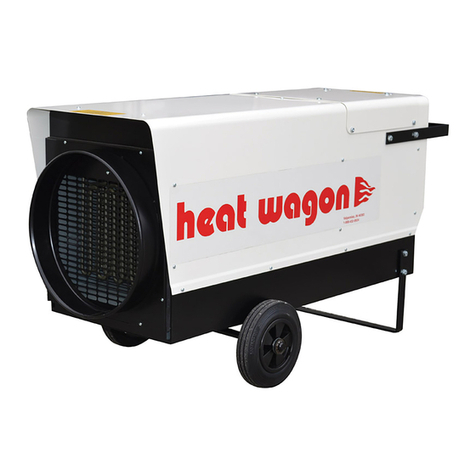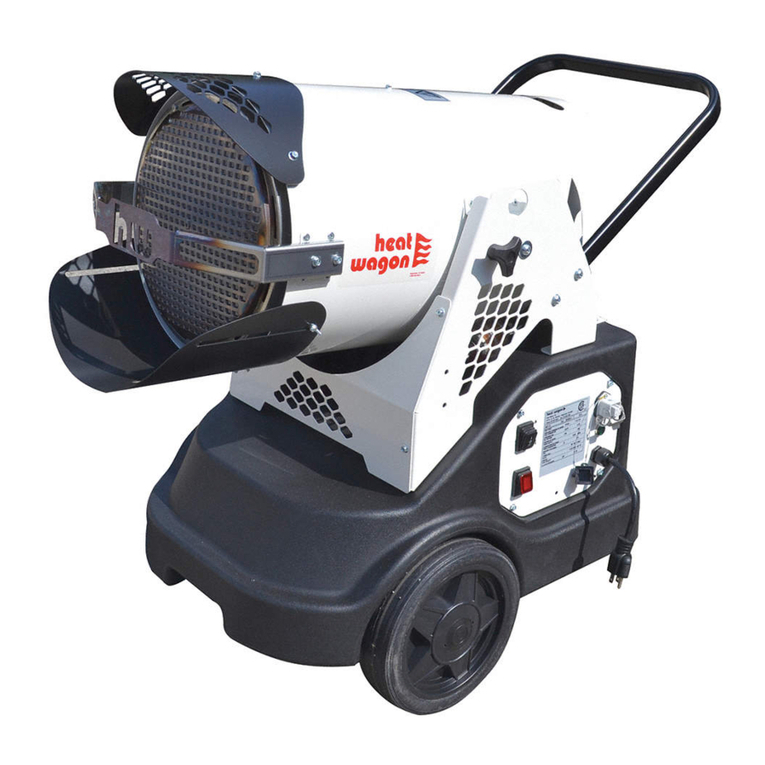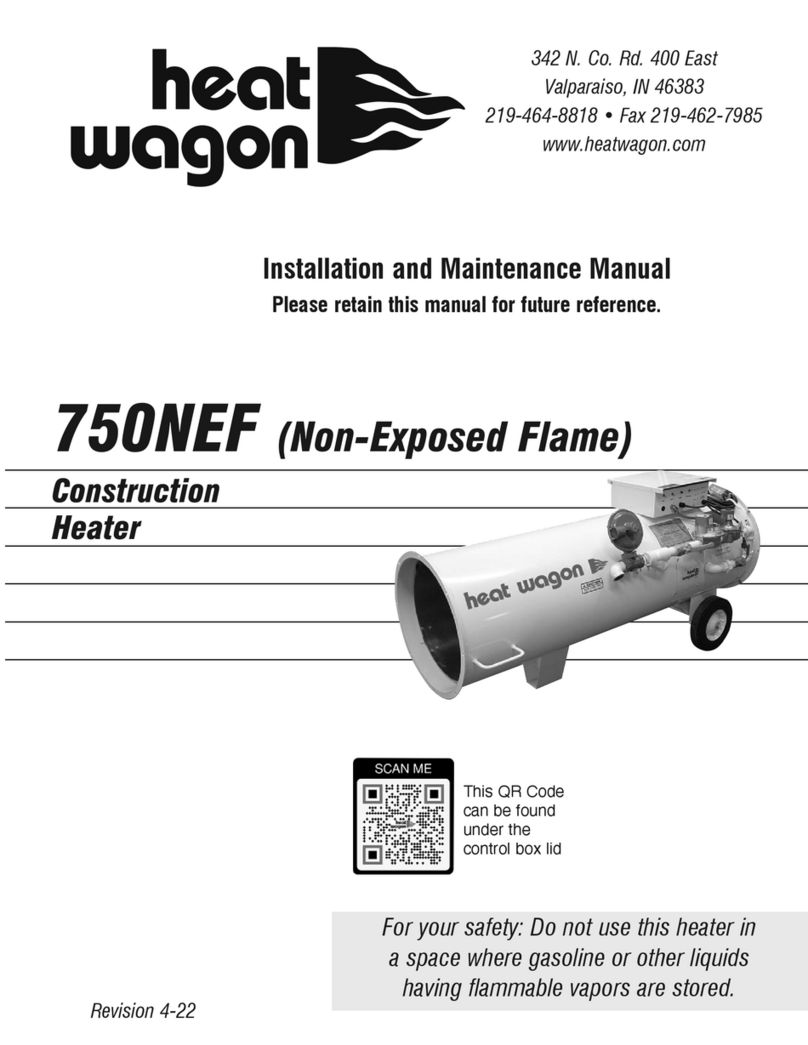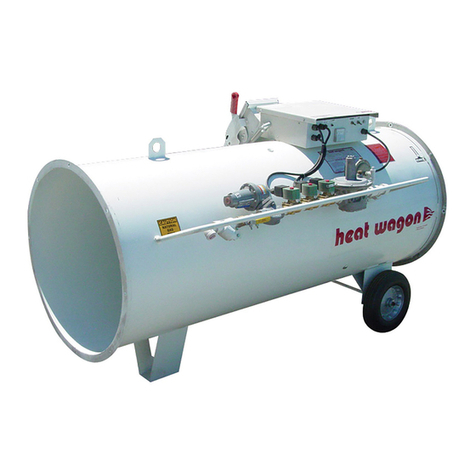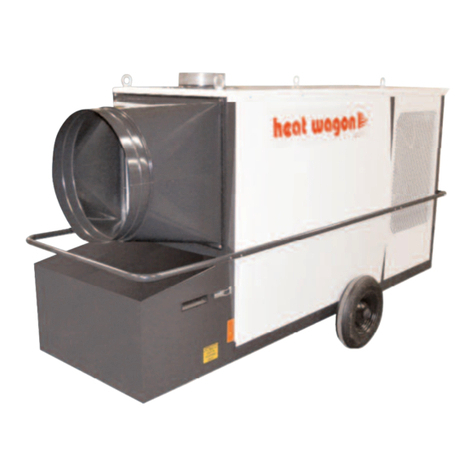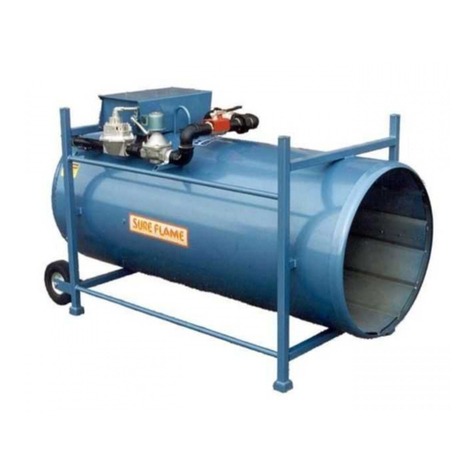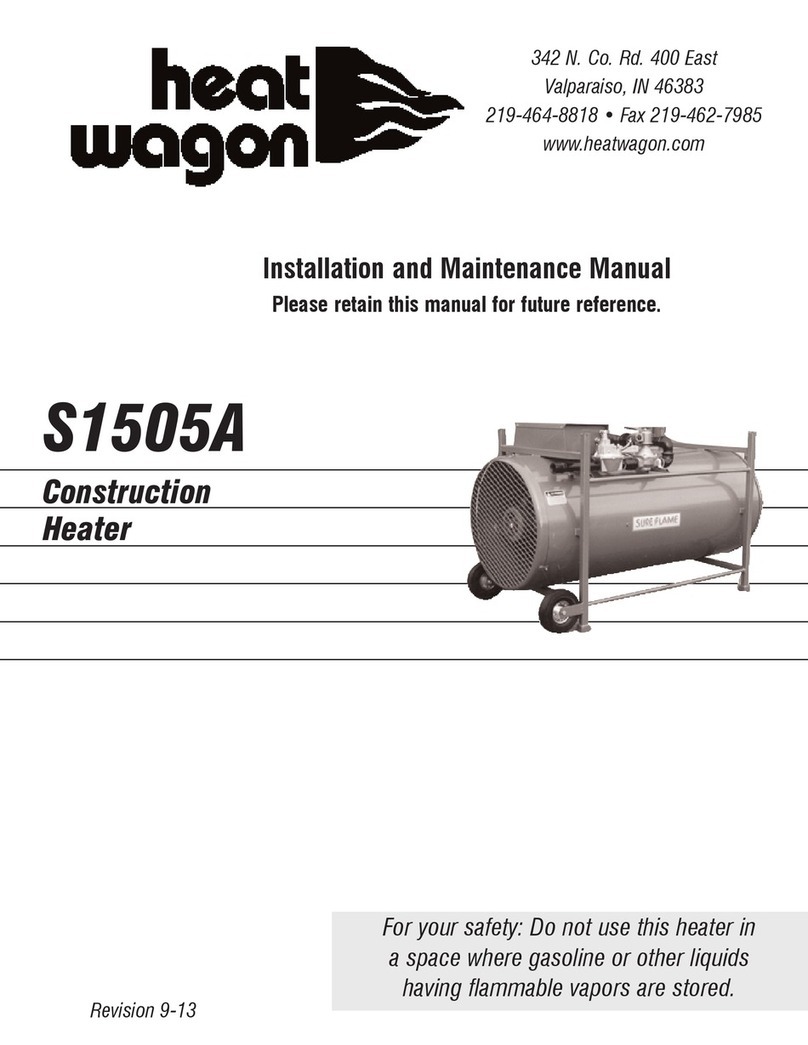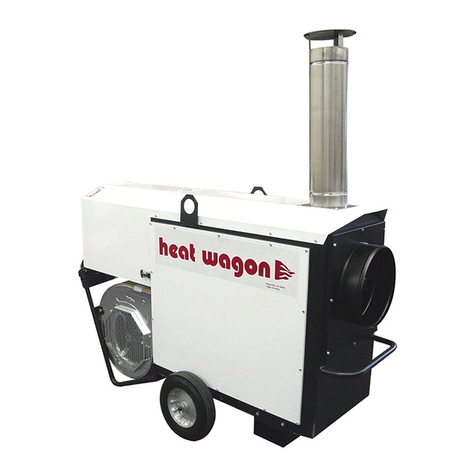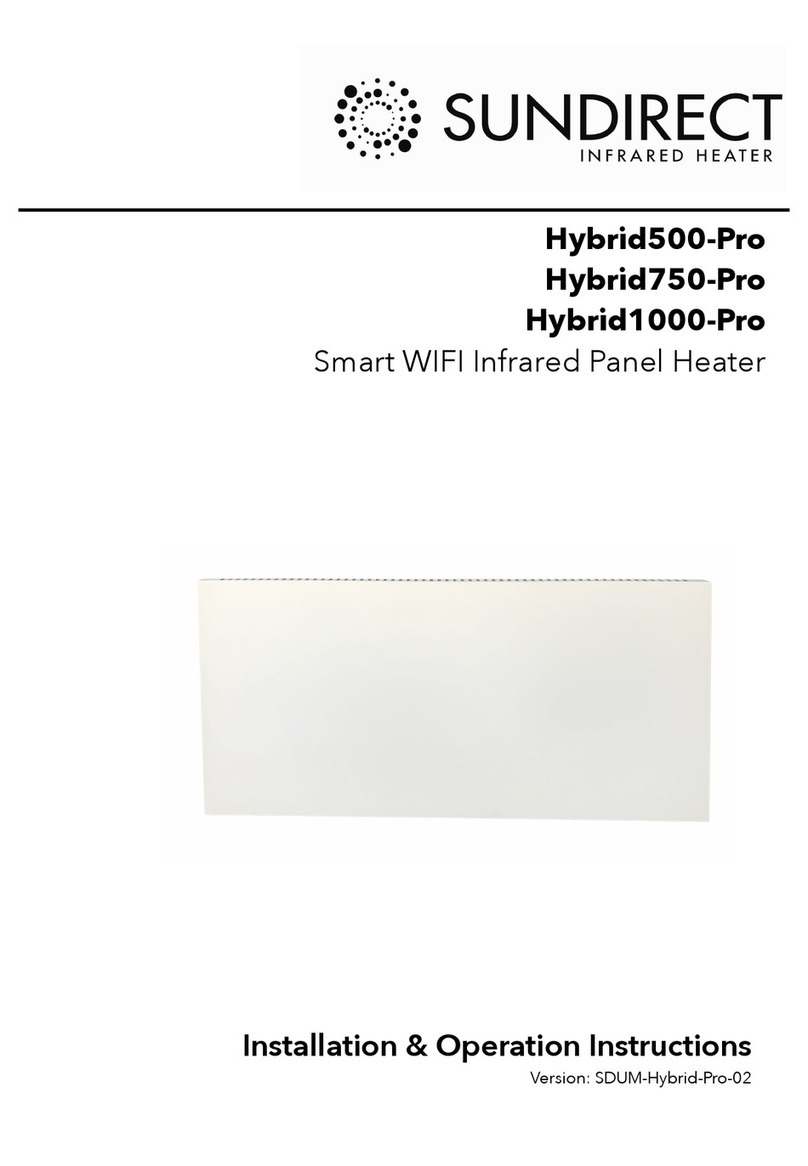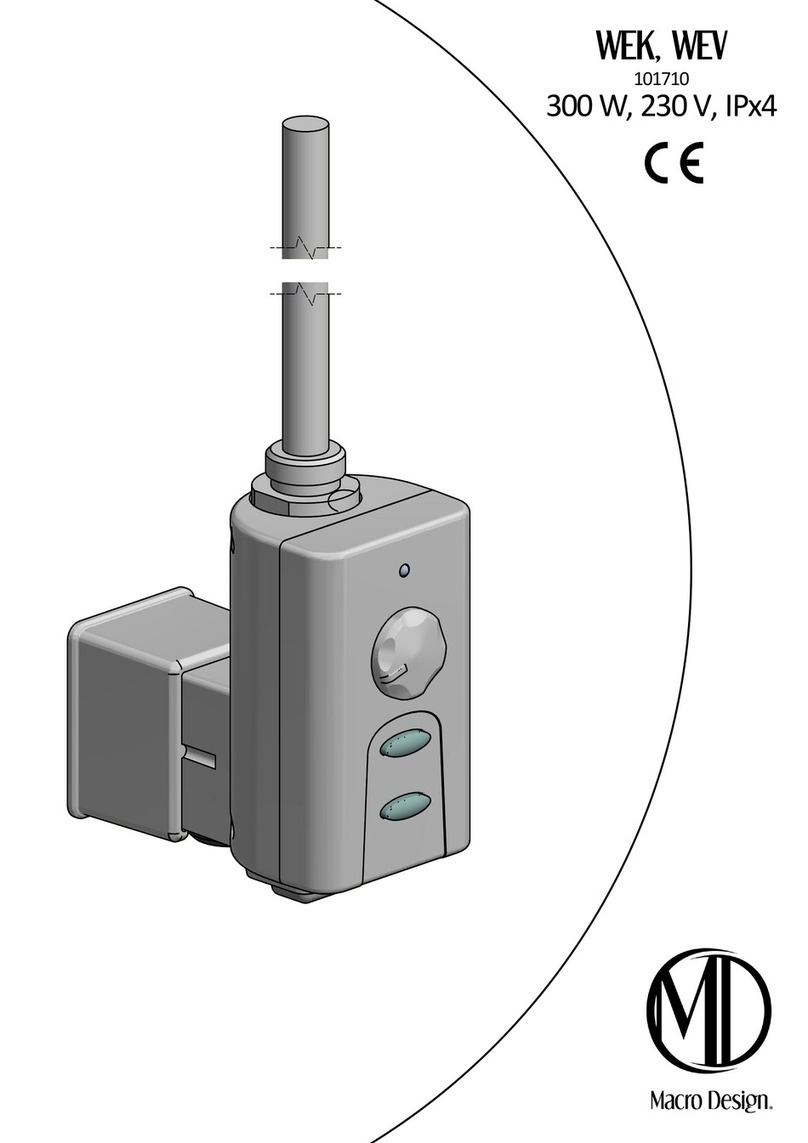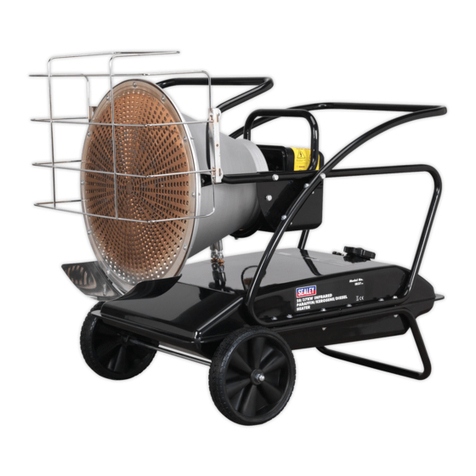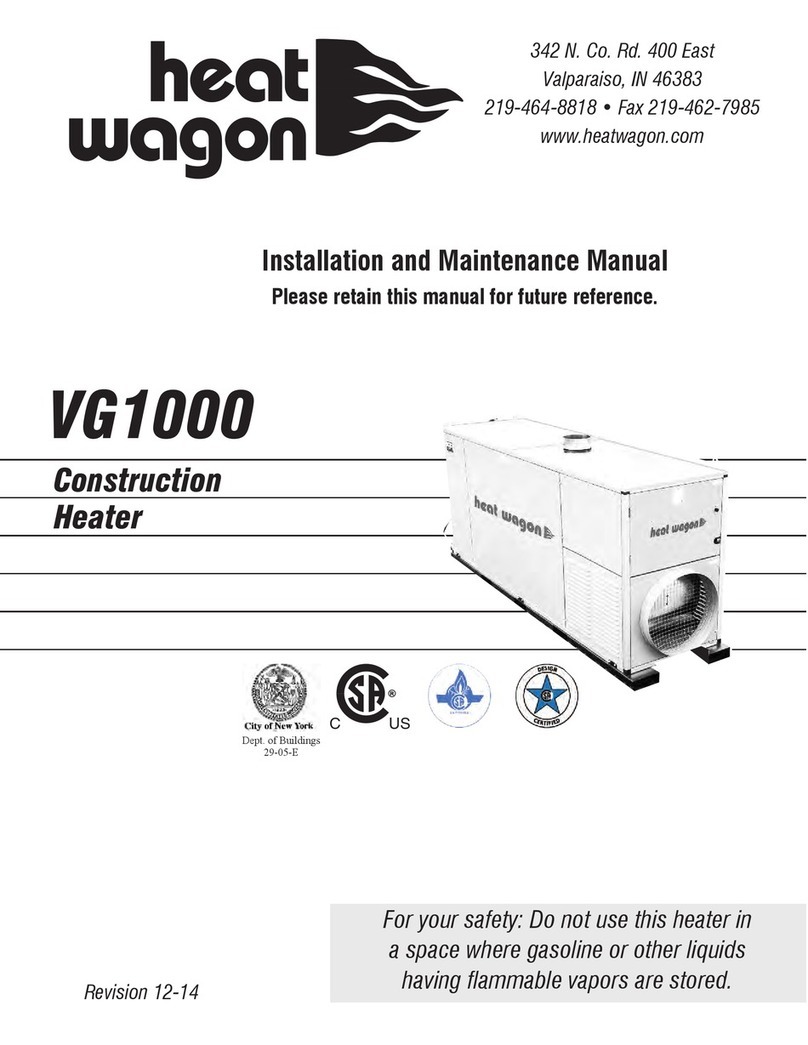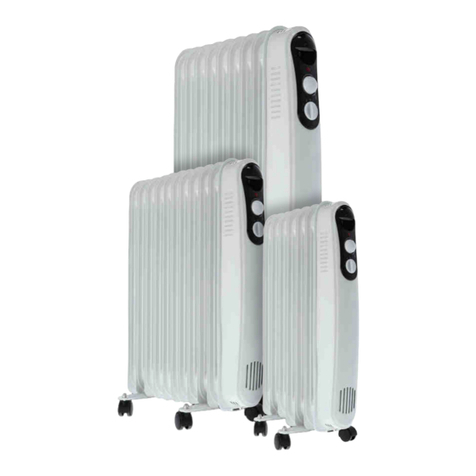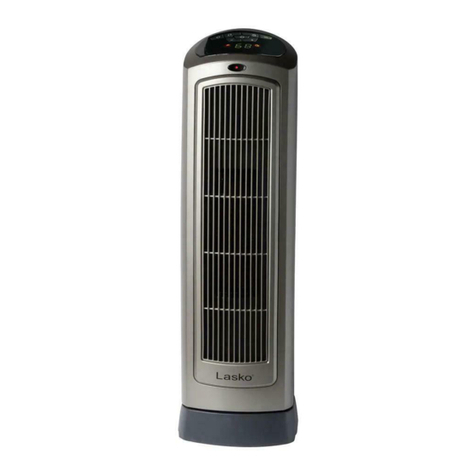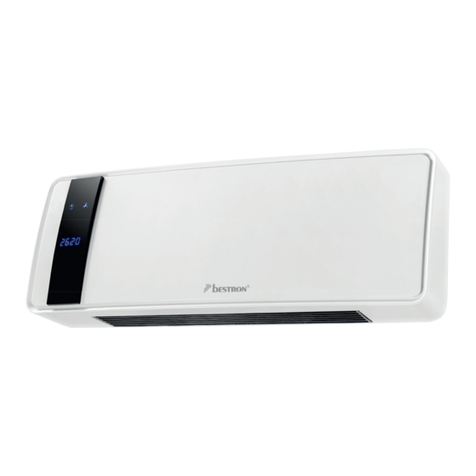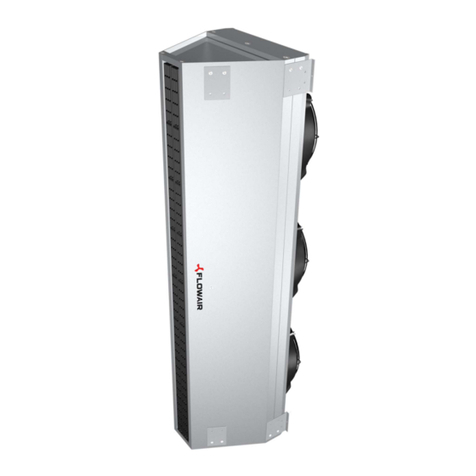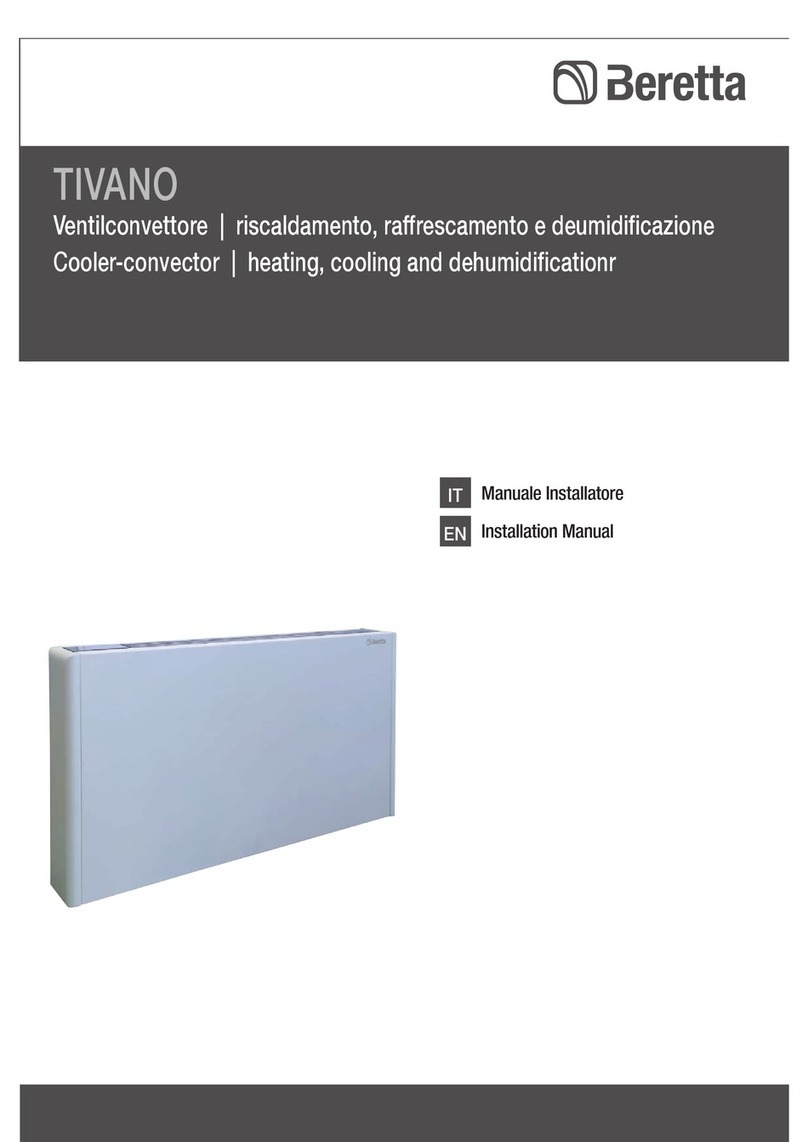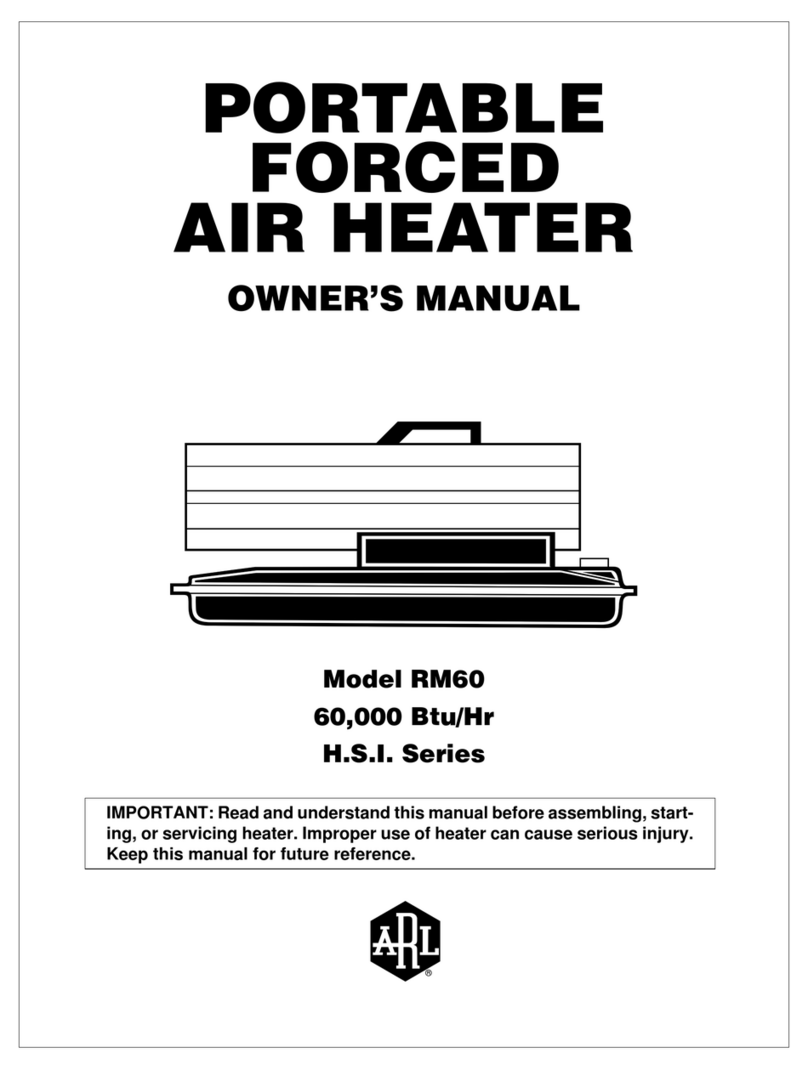
7
ADVANCED TROUBLE HOOTING
Motor runs, no visible ignition and heater reset (red light) comes on
Causes:
1. Fuel filter is dirty.
2. Spray nozzle clogged.
3. Air proving switch defective.
4. Air entering the fuel pump thru the inlet line.
5. Safety thermostat defective or tripped.
6. Fuel pump is defective/or broken pump coupling.
7. Solenoid valve is defective.
8. Control board is defective.
9. Defective transformer.
olutions:
1. Fuel filter dirty. Check the external and internal fuel filters and clean or replace as necessary. ost fuel pumps contain an internal fuel filter
located where the inlet line enters the fuel pump.
2. Spray nozzle clogged. Remove and inspect the spray nozzle. Clean or replace as needed. Do not clean the nozzle orifice with anything
metal as this may enlarge the orifice.
3. Air proving switch is defective. Try to start the heater without ducting. Oil heaters have an air proving switch wired between the control
board and the solenoid valve. (Review Sequence of Operation, page 10). The air proving switch is normally open and requires air from the
turning fan blade to close the switch and send power to the solenoid valve. Set a multi-meter to measure voltage. With the fan blade turning,
check for voltage coming out of the air proving switch to the solenoid valve. If no voltage is read, next check for voltage at the control board
terminals out to the air proving switch. If voltage at the control board is read, the air proving switch is defective. If no voltage is read at the
board, the control board is defective.
4. Air entering the fuel pump thru the fuel inlet line. If air enters the pump it will lose its prime and will not maintain adequate pump pressure.
First make sure all fittings, including the fuel filter on the inlet line are tight. If you still suspect air is entering the pump, start eliminating por-
tions of the inlet line until the air leak is found. Start this process at the fuel tank end of the inlet line. It may be necessary to draw fuel from a
small container rather than the fuel tank.
5. Safety thermostat defective or tripped. Also called overheat switch. Some oil heaters have a safety thermostat wired between the control
board and the solenoid valve. If the heater becomes too hot this normally closed switch will open and interrupt power to the solenoid valve.
Use a multi-meter set to measure ohms. Place the multi-meter probes on the two male terminals of the safety thermostat. If the multi-meter
shows infinity (no continuity) the safety thermostat is defective. If the switch opens up before the heater becomes hot, the safety thermostat is
defective.
6. Fuel pump is defective. The output pressure of the fuel pump can be checked by placing a high pressure fuel gauge into the gauge port of
the fuel pump. Use a gauge with enough capacity to measure the high pressure your particular heater can produce. Use the adjustment on the
pump to set the pump pressure to the manufacturer’s specification. If you do not have a fuel gauge, you may slightly loosen the pump’s output
line connection and place a rag there. Run the heater briefly and see if fuel reaches the rag. If no fuel is pumped, check the connection
between the motor and the fuel pump to make sure the motor can turn the pump. Also check the external and internal fuel filters for blockage,
and clean or replace if necessary. The fuel pumps internal filter is usually located where the fuel inlet line enters the pump. Check to make
sure motor is rotating pump. (BIE 99A 003 Gauge Kit, optional accessory)
7. Solenoid valve is defective. Call tech service for assistance.
8. Control board defective. Use a multi-meter set to measure voltage. Take a voltage reading on the control board terminals that send input
power to the transformer. If proper voltage is not present, the control board is defective. Check fuse on control board.
*NOTE: Top cover shell of heater needs to be
attached during troubleshooting (will affect
operation of airswitch and photocell).






















